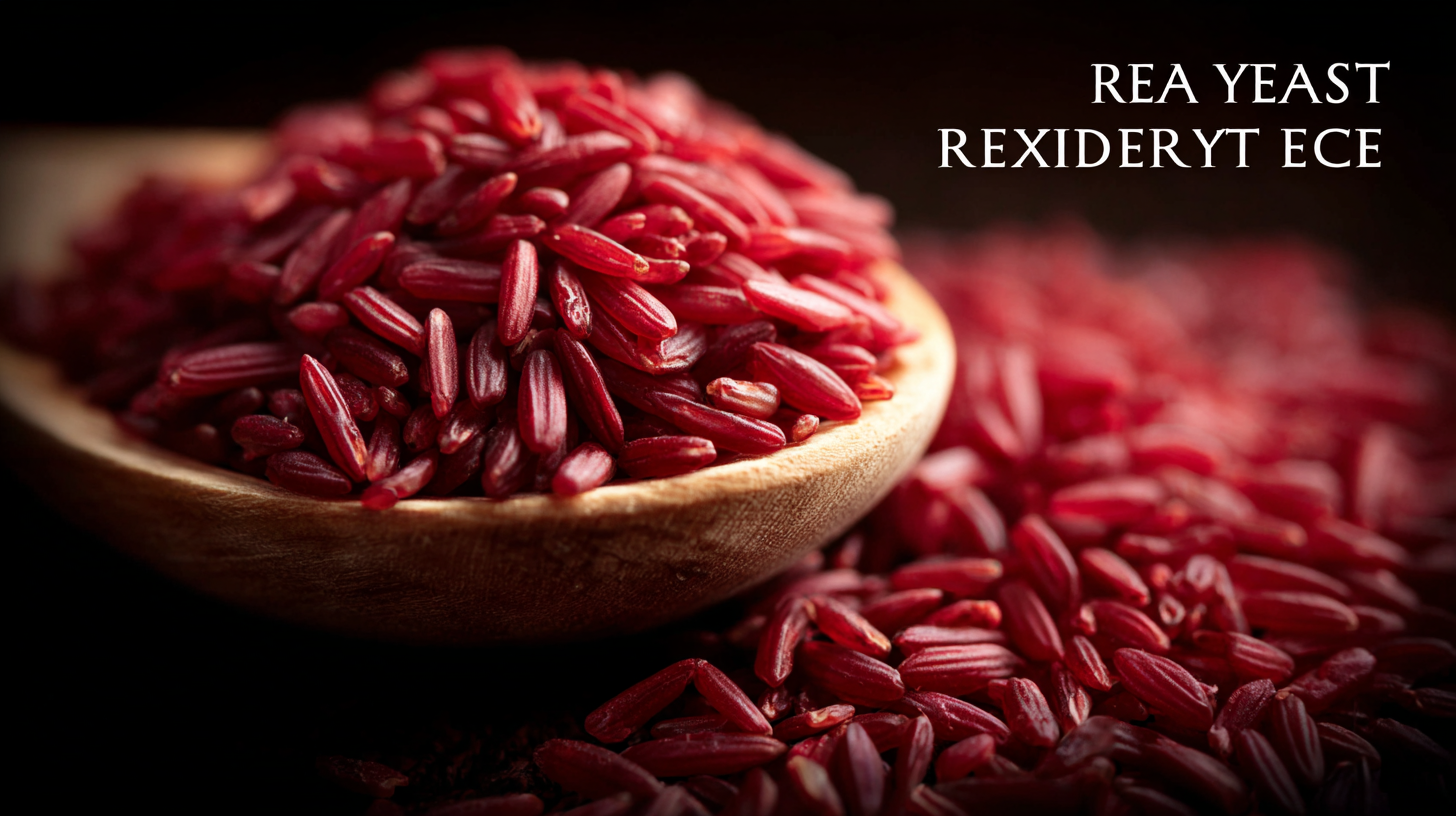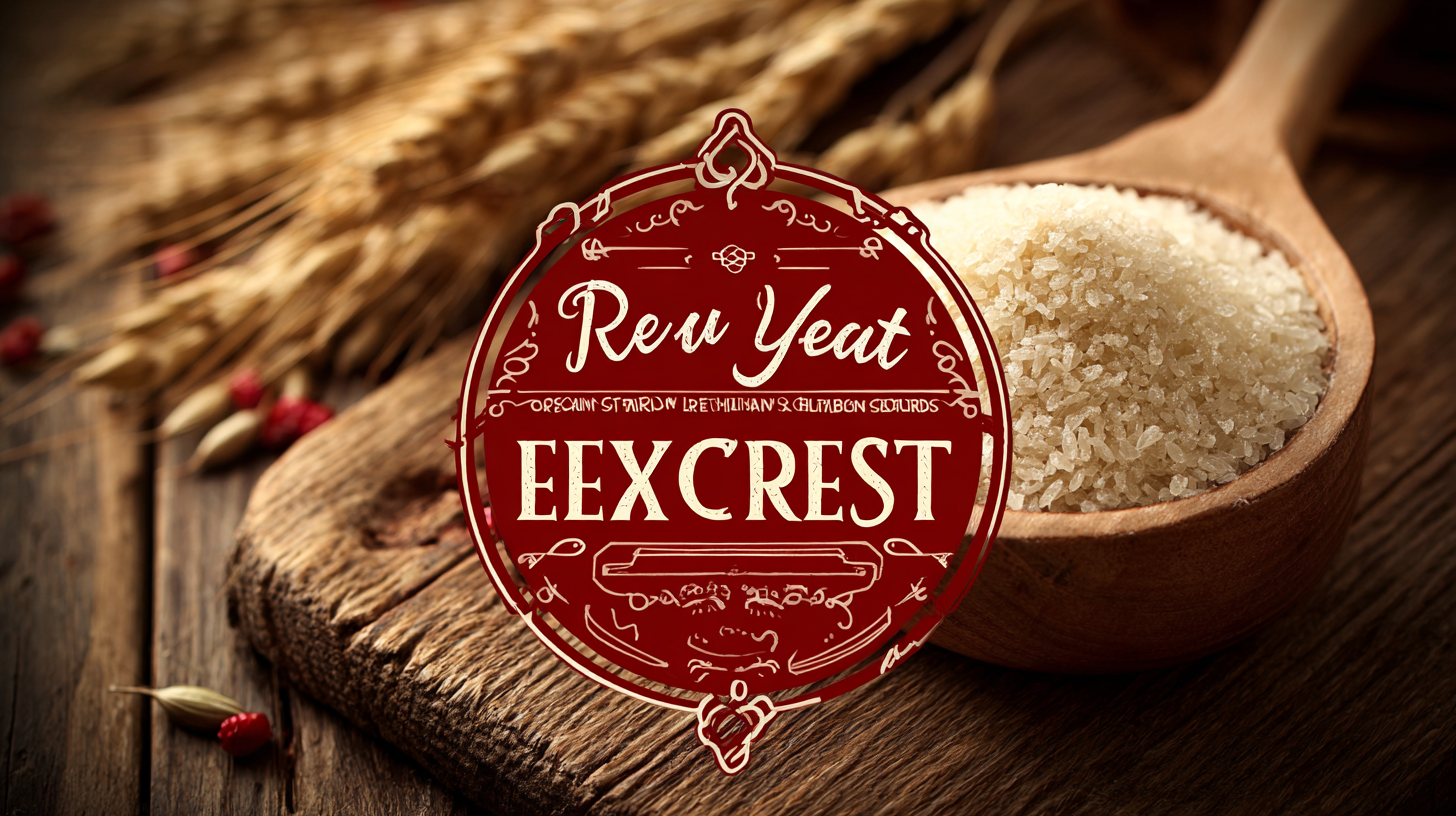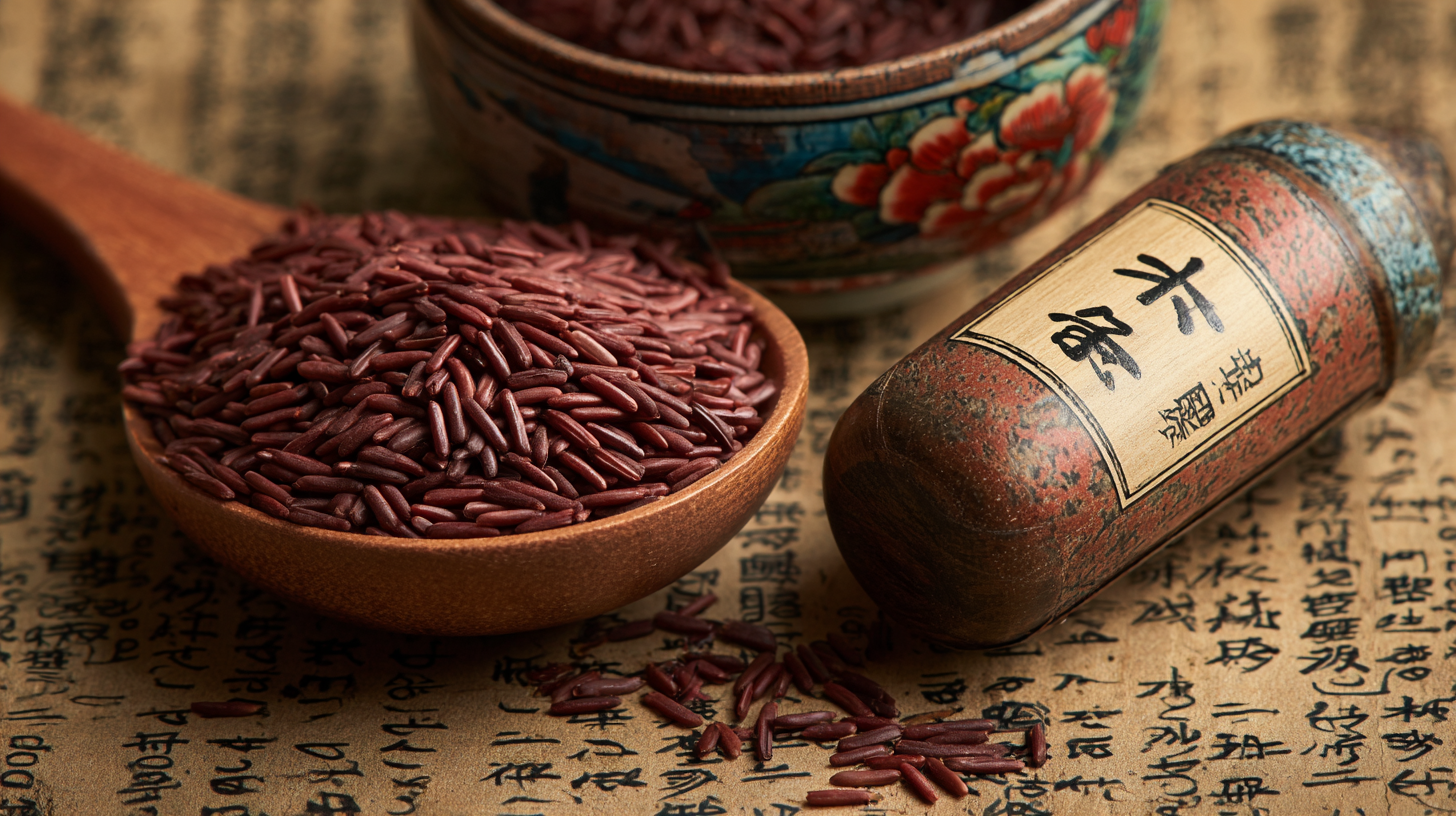Quality Chinese Craftsmanship in Best Red Yeast Rice Extract Elevating Global Standards
In recent years, the global demand for natural health products has surged, with Red Yeast Rice Extract emerging as a noteworthy contender in the realm of dietary supplements. According to a recent market research report, the global market for red yeast rice is projected to reach USD 545 million by 2025, fueled by rising health awareness and increasing adoption of natural remedies. Renowned for its monacolin content, Red Yeast Rice Extract is lauded for its potential cholesterol-lowering benefits. However, the importance of quality Chinese craftsmanship cannot be understated, as the efficacy and safety of these extracts directly correlate with their production standards. This ultimate guide aims to explore how meticulously crafted Red Yeast Rice Extract not only meets but elevates global industry standards, ensuring that consumers receive products that are both effective and trustworthy.

The Rich Tradition of Chinese Craftsmanship in Red Yeast Rice Production
The art of crafting high-quality red yeast rice has deep roots in Chinese tradition, going back over a thousand years. This process not only highlights the country’s rich cultural heritage but also underscores the meticulous methods passed down through generations. According to a report by the Global Red Yeast Rice Market Analysis, the production of red yeast rice is expected to reach a value of USD 8.2 billion by 2026, reflecting a growing global recognition of its health benefits, particularly in cholesterol management.
Chinese craftsmanship in red yeast rice production involves careful selection of rice strains, specific fermentation conditions, and stringent quality control measures. This is exemplified by the use of Monascus purpureus, the key fermenting mold, which plays an essential role in developing the compound monacolin K, known for its cholesterol-lowering properties. A study published in the Journal of Food Science indicates that traditional fermentation methods yield higher concentrations of beneficial compounds compared to industrial processes. As a result, the commitment to quality craftsmanship not only enhances the efficacy of red yeast rice products but also elevates their status on the global market, challenging other players to improve their standards to compete.

Key Problems with Current Red Yeast Rice Extract Quality Standards
When it comes to red yeast rice extract, the global market is facing notable challenges regarding quality standards. Many products on the shelves fall short due to inconsistent manufacturing practices and a lack of regulatory oversight. In particular, the presence of varying levels of monacolin K—the active compound responsible for its medicinal benefits—leads to discrepancies in efficacy and safety. Some extracts may contain substandard concentrations, while others may exceed permissible limits, posing health risks to consumers.
Additionally, the absence of stringent quality control measures has resulted in increased contamination risks. Heavy metals, mycotoxins, and other impurities can find their way into red yeast rice products, jeopardizing consumer health. The lack of transparency in the sourcing and manufacturing processes further complicates the landscape. Consumers are often left in the dark about the origin and quality of the products they purchase. To elevate global standards for red yeast rice extract, there must be a concerted effort to establish comprehensive quality guidelines that ensure safety, potency, and efficacy, benefiting both consumers and manufacturers alike.

Comparative Analysis: Chinese vs. Global Red Yeast Rice Extracts
In recent years, red yeast rice (RYR) has gained significant attention as a natural supplement known for its cholesterol-lowering properties. A comparative analysis of Chinese and global RYR extracts reveals stark differences in their quality and efficacy. Chinese RYR, derived from the fermentation process involving the Monascus purpureus yeast, typically contains a higher concentration of active compounds such as monacolin K, which has been linked to its cholesterol-lowering effects. According to a 2022 market report by the Global Journal of Clinical Nutrition, the average concentration of monacolin K in Chinese-produced RYR is approximately 1.5% to 3%, significantly exceeding the figures reported in products from Europe and North America, which average around 0.5% to 1%.
Furthermore, quality control standards in China have evolved, with the National Health Commission implementing rigorous regulations that ensure consistency in product formulation. In contrast, many global counterparts still lack comprehensive testing protocols, leading to variable quality in their extracts. A study from the International Journal of Food Sciences and Nutrition highlighted that roughly 30% of RYR products sold internationally do not meet the potency claims listed on their labels. This discrepancy emphasizes the importance of sourcing RYR from reputable Chinese manufacturers, whose practices not only elevate product quality but also adhere to global health standards, thus paving the way for increased trust and reliability in the effectiveness of red yeast rice extracts.
Quality Chinese Craftsmanship in Best Red Yeast Rice Extract Elevating Global Standards - Comparative Analysis: Chinese vs. Global Red Yeast Rice Extracts
| Characteristic | Chinese Red Yeast Rice Extract | Global Red Yeast Rice Extract |
|---|---|---|
| Source of Yeast | Monascus purpureus | Various strains (e.g., Monascus, Aspergillus) |
| Color | Deep red to purple | Variable (depends on source and processing) |
| Monacolin K Content | Higher levels (up to 3%) | Lower levels (1-2%) |
| Cultivation Method | Traditional fermentation | Varied; may use modern fermentation |
| Quality Control Standards | Strict local and international standards | Fluctuating, depends on region |
| Health Benefits | Cholesterol reduction, heart health | Cholesterol reduction, anti-inflammatory |
| Regulatory Approval | Regulated in most markets | Varies by country |
Innovations in Processing Techniques and Their Impact on Quality
In the realm of traditional Chinese medicine, red yeast rice extract has garnered international acclaim for its health benefits, particularly in cholesterol management. Innovations in processing techniques have played a pivotal role in enhancing the quality of this natural remedy. By employing advanced fermentation methods and precise temperature controls, producers can ensure a consistent level of active compounds, maximizing the extract’s efficacy while maintaining its natural integrity.
Furthermore, the introduction of rigorous quality control measures has significantly elevated global standards. Manufacturers are now investing in state-of-the-art laboratories to conduct comprehensive testing for contaminants and potency. This focus on quality not only reassures consumers about the safety and effectiveness of red yeast rice extracts but also solidifies China’s reputation as a leader in herbal supplement production. As these innovations continue to unfold, they pave the way for a new era of sustainable sourcing and consumer trust in traditional remedies.
Addressing Consumer Concerns: Authenticity and Safety of Red Yeast Rice Extracts
In recent years, red yeast rice extract has gained immense popularity worldwide, particularly in the wellness and dietary supplement sectors. However, growing consumer concerns regarding the authenticity and safety of these products have called for greater transparency and accountability in the industry. Red yeast rice, derived from fermented rice with Monascus purpureus, varies widely in quality, composition, and production methods. Therefore, consumers must choose products from reputable manufacturers who prioritize quality control and adhere to stringent safety standards.
To address these concerns, it is essential for manufacturers to provide clear information about their sourcing and production processes. Certification of authenticity and thorough testing for contaminants can build consumer trust. Moreover, effective labeling practices can help individuals make informed choices about the red yeast rice extract they purchase.
As the demand for natural remedies continues to grow, it is crucial for both producers and consumers to ensure that the quality of red yeast rice extract meets and exceeds global standards, thereby securing its place as a trusted supplement in personal health regimens.
